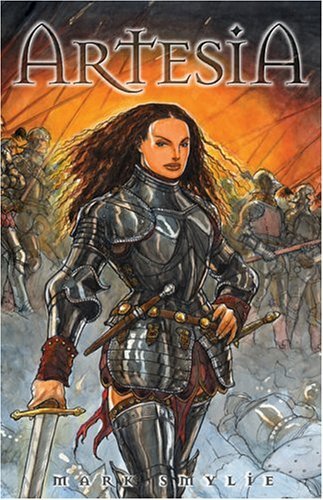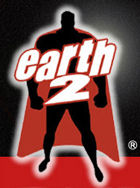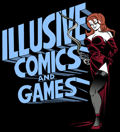| Artesia
Comic book
readers have something that most other forms of literature
do not have: the idea of continuity. The serial format of
the medium has created a long standing set of histories that
most writers of the larger companies must contend with. One
cannot write a book in the DC universe without eventually
mentioning Superman (or Batman, or the Justice League, etc.)
so that the reader is made aware of the world in which the
story resides. The only way out of this is for a writer or
artist to create a book that exists outside the set continuity,
one totally original in setting, time period, and place.
This
isn’t something that can easily be done at the big
companies, but smaller companies are usually more willing
to give a creator free reign in their writing, and to an
even greater degree when a creator has concocted his own
company for his creation, which seems to be a trend these
days. Such is the case with Mark Smylie’s fantasy
Artesia from Archaia Studios Press, the current
publishing home of the book since leaving Sirius Entertainment.
The
world that Smylie has created is a dark one; the highlands
of Dara-Dess are locked in struggle with surrounding principalities
for control of the Northern territories. Leading the army
in place of King Branimir of Huelt is his captain and concubine,
Artesia, High Priestess of Yhera. A fierce warrior and respected
leader, the stories of Artesia’s link to the spirit
world and her ability to destroy her enemy have garnered
her a reputation that far outshines her king. For this reason,
Bran has turned against his lover, inviting clergy of other
gods into his territory and working in secret to eliminate
Artesia.
Artesia
and her loyal guard are now faced with the advent of war
within their homeland, as well as threats and rumors pouring
in from the south of unrest in the distant empires. Artesia
must now rely on the loyalty of her officers and the supernatural
powers that infuse her with the ability to talk to gods,
in order to survive the tides of bloody conflict that are
to come.
Let
me first say that this is, artistically, gorgeous. The artwork
by Smylie is excellent. The detail perhaps is what best
embodies his work, as every piece of armor and molding feels
realistic, worn, and textured. Smylie has done his homework
when it comes to the character designs, since the armor
is actually drawn as if it were large plates of heavy leathers
and metals bolted together, and not just a poor man’s
excuse for drawn armor, which is what most comics that delve
into the fantasy realms end up delivering.
In addition,
Smylie appears to mix several styles and time periods together
when it comes to designing his characters; there are obvious
European influences in the style of dress and armor, but
also some vaguely Eastern and Mid-East nuances at play,
which helps to create the atmosphere of a completely fictional
world. Artesia and some of her officers all appear to be
from the Mid-East, with coffee colored skin and curled hair.
That makes part of the reason that Artesia, whether clothed
for battle or lacking in the clothed department, appears
fiercely beautiful, almost handsome, as drawn by Smylie.
Also of interest are some of the celestial entities he designs:
the gorgonae, and many forms of Yhera are visually interesting
and possessed of an otherworldly nature that separates them
from the rest of the characters, which the scripts defty
calls for.
His
art style, which is rather unique, does suffer from a bit
of tendency toward facial sameness. Each character has almost
the same rigid and flat nose, male or female, but Artesia,
the only real protagonist of the piece, is usually identifiable.
The beautiful coloring on this book also helps to define
this fantasy realm. Smylie’s palette is subdued and
pale, usually employing shading of colors to highlight different
scenes: wispy grays and whites and blues for scenes involving
the supernatural, and pale citrine for scenes of war.
All
of the very good artwork aside, I’ve found textbooks
on particle physics that were more reader friendly than
Artesia. Smylie falls into the trap that many fantasy
writers, from comics and books, fall into and that is overwriting
the world they’re creating. Smylie clearly spent a
large amount of time in building the world his character
inhabits, but he’s let the “world” overpower
his story.
He throws
names at the reader almost constantly, whether naming locations
that the reader cannot possibly know (Uthmark, the Academy
at Therapoli, Empire Thessid-Gola, etc.) or when referencing
the very extensive, very dense cosmology he has created
with a pantheon of gods that numbers twenty-six, each god
or goddess possessed of a very specific realm of duties
and sacraments. There are three aspects of Yhera, several
forms of the Gorgonae, various familial relationships between
the different gods. All the while, these differences and
histories are not given to the reader in the story, but
in a section in the back of the collection that lists all
the cosmological figures. It’s nice that the creator
included this little tidbit for the reader, but these are
the kind of things that should be made apparent in the story.
Instead, Smylie just drops names and references left and
right to his fictional pantheon, offering the reader no
real hint as to what the meaning behind such a name drop
could be. He does similar things with the history of the
world, making mention of “the Dragon Kings,”
“Worm Kings,” and “Lion Emperor,”
but giving the reader the barest idea what these titles
imply historically or presently to the characters in the
work.
It’s abundantly clear that Smylie
spent plenty of time concocting his fantasy realm, but he’s
like a dungeon master or game designer who, after coming
up with a very intricate story setting, forgot to include
the story. The only character that we get even the barest
glimpse of is Artesia. The rest of the characters are faces
in the crowd that blend together and mean little to the
overall story. We never get a hint of any character’s
personality or any depth beyond the topical “soldier”
or “king” or “concubine” designations.
The gods of the book are visually distinctive, but it’s
near impossible to understand them without the section in
the back, and even then it’s an uphill battle.
I was
so very disappointed in this graphic novel, not just for
the lack of story and almost boring pace, but I’d
come into reading it expecting a semi-historical tale more
akin to Age of Bronze than Lord of the Rings.
For $24.95, I expect more than invented history and cosmology
barely strung together by bad plotting. The artwork remains
beautiful. I just wish the writing matched it.
Artesia
|






